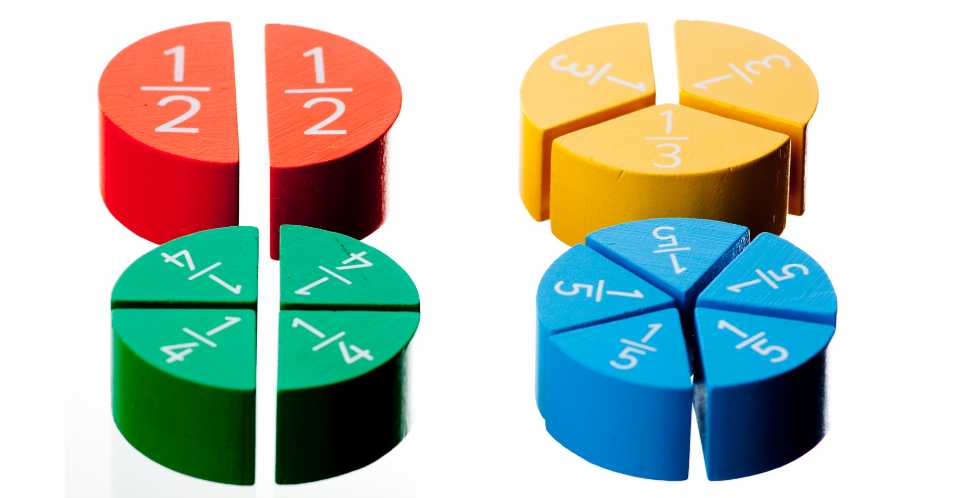Many activities require proportional reasoning, such as adjusting the amount of ingredients in a recipe or calculating distance travelled as a function of speed using ratios and proportions. Certain intuitive conceptions of proportions can mislead students and impede their learning in school settings.
A team from the University of Geneva (UNIGE) demonstrates that multiple categorizations in mathematical problems – the ability to adopt multiple points of view on the same problem – allows them to overcome this barrier. The findings open up new avenues for mathematical learning as well as other disciplines.
Proportional reasoning is a cognitive process in which ratios and proportions are used to solve a mathematical problem. This reasoning is taught and practiced in school, but it is also very useful in our daily lives.
It enables us to calculate the price of specific products while shopping, adjust the quantity of ingredients in a recipe, and convert foreign currencies. When we understand that a speed of 30 mph equals a distance of 15 miles traveled in 30 minutes, we are using proportional reasoning.
It is also involved in risk assessment, such as when we make health decisions by weighing the effectiveness of a treatment or vaccine against the risks of the disease.
Proportional Reasoning Learning Complications
This complex learning process is typically introduced in schools during the second half of primary school. It may be hampered or limited by students’ intuitive conceptions of proportions.
This is true, for example, when a student considers a fraction to be two whole numbers superimposed on each other (1/2 is 1 over 2) rather than a ratio (1/2 is half of a quantity).
The Instruction, Development, Education, and Learning (IDEA) research group of the UNIGE Faculty of Psychology and Educational Sciences investigated this phenomenon in a recent study. The scientists were able to mitigate the problem by proposing specific mathematical exercises.
Cognitive Flexibility And Multiple Categorization
The goal of this study was to demonstrate that multiple categorization — taking multiple perspectives on the same problem — leads to cognitive flexibility, which allows students to reinterpret a mathematical statement in a more relevant way and improves their ability to solve it.
The research team tested this approach in schools with varying socioeconomic levels to ensure that it would benefit all students.
Multiple categorization entails presenting students with mathematical problems that can be solved using a variety of strategies depending on the viewpoint.
For example, when we say “I ate a quarter of two chocolates,” we can mean “I ate one quarter of each chocolate” or “I ate two quarters of a chocolate.” This is the same amount, but the mathematical modeling differs (¼ + ¼ = ¼ x 2 = 2/4 = ½ versus 2/4 x 1 = ½).
Similarly, to help students understand ratio and the reciprocity of multiplication and division, problems like “Lisa has seven red cubes. Leo possesses 21 blue cubes Who has more cubes? How many times more? Who has less cubes? How many times less?” can be given to students, and the are asked to consider both Lisa’s and Leo’s points of view.
If Leo has three times as many cubes as Lisa, it follows that Lisa has three times fewer cubes than Leo. This mental gymnastics aids in the development of the reciprocity of multiplication and division.
More Diverse Solving Strategies
Over one school year, twenty-eight classes of CM1 and CM2 (9-10-year-olds and 10-11-year-olds) in the Île-de-France region participated in the study.
The experimental group received 12 mathematics lessons based on the multiple categorization principle and involving problems with multiplicative structures (multiplication/division, fraction, proportionality). Their results were compared to those of the control group, which received traditional mathematics instruction.
“At the end of the school year, the experimental group performed better than the control group on the post-test when solving proportional problems, and proposed more diversified solving strategies,”
said Emmanuel Sander, of the UNIGE’s Faculty of Psychology and Educational Sciences, the supervisor of the study.
The analyses also reveal that schools from all socioeconomic backgrounds experienced the performance gap in favor of the experimental classes.
“Surprisingly, the 9–10-year-olds in the experimental classes achieved the same level of performance as the 10–11-year-olds in the traditional classes, i.e. pupils with an extra year of teaching,”
said first author Calliste Scheibling-Sève.
The findings suggest new ways to overcome preconceived notions that hinder learning proportional reasoning. They also provide fresh perspectives on how other academic fields can develop students’ cognitive flexibility.
“This approach can be applied to other school subjects, such as science, grammar and citizenship education,”
explained Katarina Gvozdic, research and teaching fellow in the IDEA group. The research team’s next step is to create interventions for other academic subjects based on these principles.
Scheibling-Sève, C., Gvozdic, K., Pasquinelli, E., & Sander, E. (2022). Enhancing Cognitive Flexibility Through a Training Based on Multiple Categorization: Developing Proportional Reasoning in Primary School. Journal of Numerical Cognition, 8(3), 443-472.
